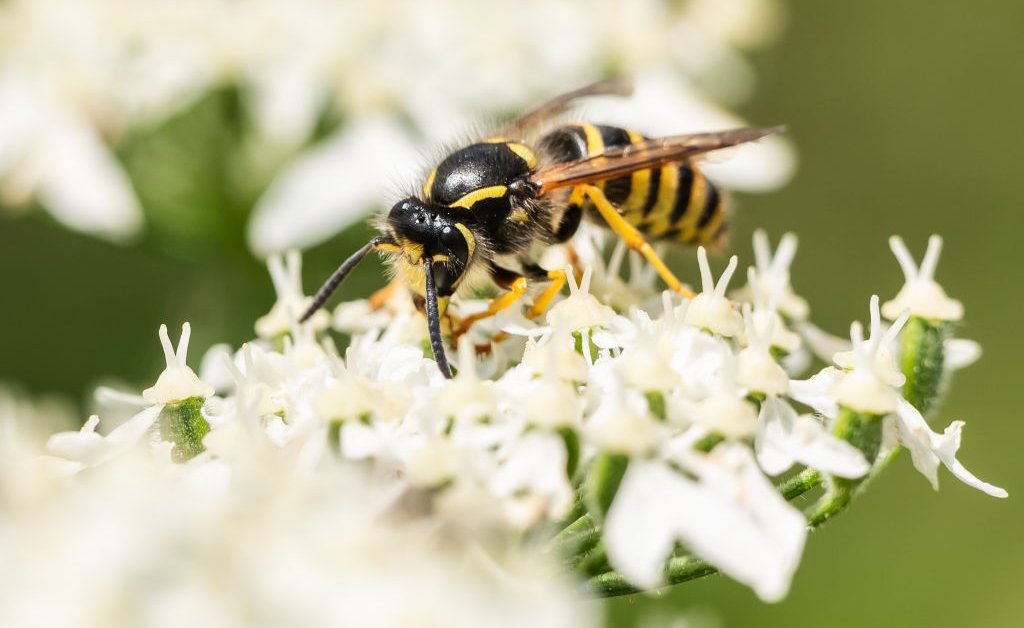Climate Change: What Does It Mean For Summer Insect Activity?

Welcome to your ultimate source for breaking news, trending updates, and in-depth stories from around the world. Whether it's politics, technology, entertainment, sports, or lifestyle, we bring you real-time updates that keep you informed and ahead of the curve.
Our team works tirelessly to ensure you never miss a moment. From the latest developments in global events to the most talked-about topics on social media, our news platform is designed to deliver accurate and timely information, all in one place.
Stay in the know and join thousands of readers who trust us for reliable, up-to-date content. Explore our expertly curated articles and dive deeper into the stories that matter to you. Visit Best Website now and be part of the conversation. Don't miss out on the headlines that shape our world!
Table of Contents
Climate Change: What Does it Mean for Summer Insect Activity?
Summer wouldn't be summer without the buzzing of bees, the chirping of crickets, and the occasional mosquito bite. But climate change is significantly altering insect populations, impacting the familiar sounds and sights of summer, and much more. The implications are far-reaching, affecting everything from agriculture to ecosystems.
Shifting Seasons and Insect Life Cycles:
Climate change is disrupting the delicate balance of insect life cycles. Warmer temperatures are causing many insect species to emerge earlier in the spring and extend their activity into the autumn. This phenological mismatch can disrupt the relationships between insects and their food sources, predators, and parasites. For example, if a bird's migration pattern doesn't align with the peak emergence of its insect prey, it could face food shortages.
This shift also impacts the length of the summer insect season. While some species might thrive in warmer conditions, extending their activity, others may struggle to cope with the heat and drought, leading to population declines. This has significant consequences for ecosystems dependent on these insects.
Increased Range Expansion:
Rising temperatures allow some insect species, including invasive pests and disease vectors, to expand their geographic range. The warmer climate enables them to survive and reproduce in areas previously too cold. This can lead to:
- Increased agricultural damage: Pest insects like the brown marmorated stink bug can devastate crops, impacting food security.
- Spread of diseases: Mosquitoes, carriers of diseases like Zika and West Nile virus, can expand their territories, increasing the risk of outbreaks in new regions.
- Disruption of native ecosystems: Invasive insects can outcompete native species, leading to biodiversity loss.
Extreme Weather Events and Insect Populations:
Extreme weather events, exacerbated by climate change, also significantly impact insect populations. Severe droughts can decimate insect populations, while intense rainfall can flood nests and breeding grounds. Heat waves can cause mass mortality, particularly in species less adapted to high temperatures.
The Importance of Insect Biodiversity:
Insect biodiversity is crucial for maintaining healthy ecosystems. Insects play vital roles as pollinators, decomposers, and a food source for many animals. The decline in insect populations due to climate change threatens these essential ecosystem services. A decrease in pollinators, for example, can have devastating effects on agriculture and the production of fruits, vegetables, and nuts.
What Can We Do?
Addressing climate change is crucial to protecting insect populations. This involves:
- Reducing greenhouse gas emissions: Transitioning to renewable energy sources, improving energy efficiency, and adopting sustainable transportation are all vital steps.
- Protecting and restoring habitats: Creating and maintaining diverse habitats provides refuge for insects and supports their survival.
- Supporting sustainable agriculture: Minimizing pesticide use and promoting biodiversity-friendly farming practices can help protect insect populations.
The future of summer insect activity is inextricably linked to our actions on climate change. By taking steps to mitigate climate change and protect insect habitats, we can help ensure a vibrant and healthy insect world for generations to come. Learn more about climate change and its effects on the environment by visiting the and the . Let's work together to protect our planet and its incredible biodiversity.

Thank you for visiting our website, your trusted source for the latest updates and in-depth coverage on Climate Change: What Does It Mean For Summer Insect Activity?. We're committed to keeping you informed with timely and accurate information to meet your curiosity and needs.
If you have any questions, suggestions, or feedback, we'd love to hear from you. Your insights are valuable to us and help us improve to serve you better. Feel free to reach out through our contact page.
Don't forget to bookmark our website and check back regularly for the latest headlines and trending topics. See you next time, and thank you for being part of our growing community!
Featured Posts
-
 Did Kamala Harris Confront Anderson Cooper Following Intense Biden Debate
May 24, 2025
Did Kamala Harris Confront Anderson Cooper Following Intense Biden Debate
May 24, 2025 -
 Postpartum Margot Robbie Sizzles In Red Bikini On Malibu Beach
May 24, 2025
Postpartum Margot Robbie Sizzles In Red Bikini On Malibu Beach
May 24, 2025 -
 Smack Down Before Snme Winners Analysis And Road To Tampa Recap
May 24, 2025
Smack Down Before Snme Winners Analysis And Road To Tampa Recap
May 24, 2025 -
 Is Cody Rhodes Avoiding Wwe Smack Down Examining The Potential Reasons
May 24, 2025
Is Cody Rhodes Avoiding Wwe Smack Down Examining The Potential Reasons
May 24, 2025 -
 A Refreshing Cocktail Margot Robbies Choice
May 24, 2025
A Refreshing Cocktail Margot Robbies Choice
May 24, 2025
